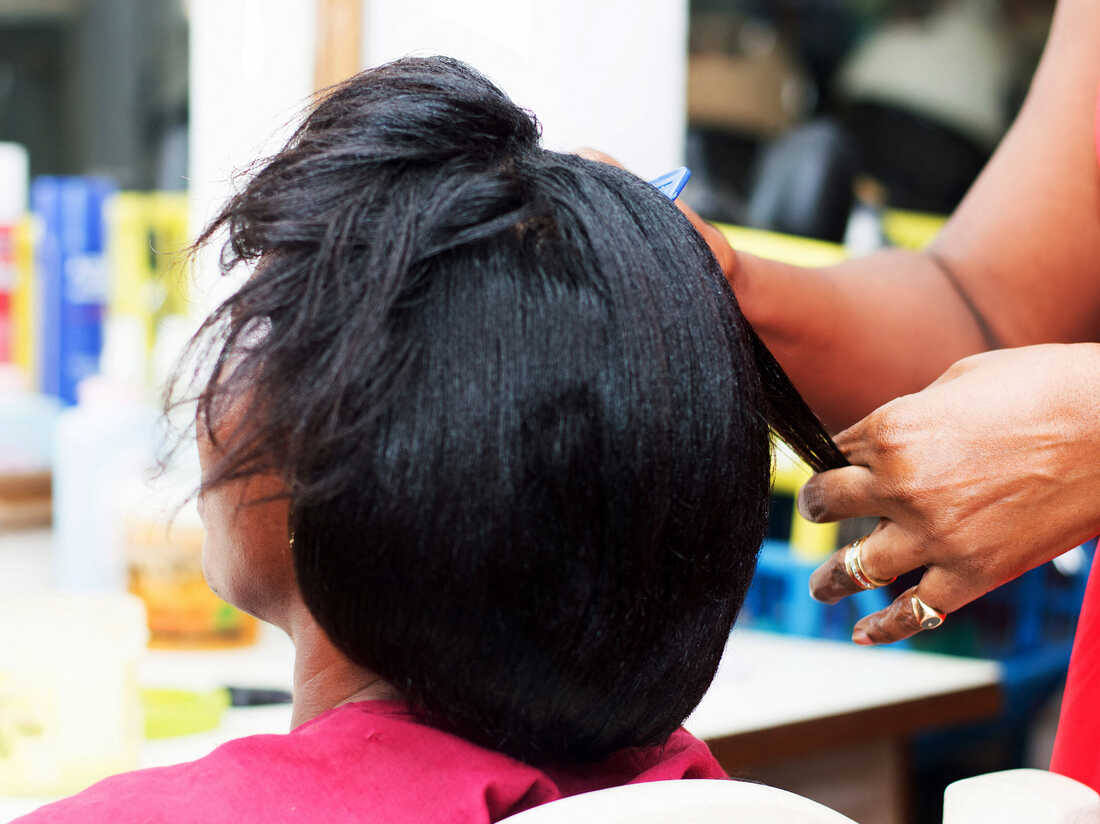Your Health
The FDA misses its own deadline to propose a ban on formaldehyde from hair products
The Food and Drug Administration has missed its own deadline to propose a ban on the use of formaldehyde as an ingredient in hair relaxers and hair straighteners on the market in the United States. The federal agency proposed the ban in October 2023 and was scheduled for implementation in April 2024.
Getty Images
hide caption
toggle caption
Getty Images
The Food and Drug Administration has missed its own deadline to propose a ban on the use of formaldehyde as an ingredient in hair relaxers and hair straighteners on the market in the United States. The federal agency proposed the ban in October 2023 and was scheduled for implementation in April 2024.
Getty Images
The Food and Drug Administration has missed its own deadline to propose a ban on the use of formaldehyde as an ingredient in hair relaxers and hair straighteners on the market in the United States.
The federal agency proposed the ban in October 2023 and scheduled its implementation for April 2024. The FDA’s proposed rule takes a large step in raising awareness about the potential harm that formaldehyde—a highly toxic gas—can cause to the many Black women who typically use straightening products.
It is unclear at this time why the FDA’s proposed rule was not released by its intended deadline, which raises concerns about the federal agency’s commitment to protecting public health.
In an email inquiry on April 3, the federal agency told NPR that the action date for the proposed ban was set for April 2024 and that officials were “still developing the proposed rule.”
A spokesperson declined to comment further about the timing or the ban’s detailed content.
But when pressed about the status of the ban to the federal agency nearly a month later, an FDA spokesperson told NPR that the proposed rule “continues to be a high priority,” as they declined again to comment further about its timing or content.
In 2022, researchers at the National Institutes of Health released a study that showed an increased risk of hormone-related cancer in women who have used the chemicals in their hair.
The findings in the report were especially concerning for Black women, who are far more likely to report using such products, including many kinds of chemical relaxers, Brazilian blowouts and keratin treatments.
“We estimated that 1.64% of women who never used hair straighteners would go on to develop uterine cancer by the age of 70; but for frequent users, that risk goes up to 4.05%,” lead author Alexandra White, the head of the National Institute of Environmental Health Sciences Environment and Cancer Epidemiology group, told NPR in 2022.
What are the health risks associated with formaldehyde?
Formaldehyde is a colorless and strong-smelling gas that presents health hazards when breathed into the lungs or when coming into contact with the eyes or skin, according to the FDA.
Once the gas is present in the air at levels exceeding 0.1 ppm (parts per million), those who are in contact can experience harmful side effects such as:
Watery eyes Burning sensations in the eyes, nose and throat Coughing Wheezing Nausea Skin irritation
Exposure to the dangerous gas can also cause allergic (or contact) dermatitis, an itchy rash caused by direct contact with a substance or an allergic reaction to it. The more exposure one has to products containing formaldehyde—in terms of length of time and concentration—the higher the health risk, the FDA reports.
Formaldehyde has several long-term effects associated with it, which can include an increased number of headaches, asthma, contact dermatitis and possibly cancer.
Chemical hair straighteners have also been associated with risks of uterine cancer, breast cancer and even ovarian cancer — especially for Black women.
A number of marketed products on shelves contain formaldehyde
This Feb. 3, 2011 photo shows Adriana Guedes as she has her hair straightened by hair dresser Tania Machado at a salon in Ipanema, Rio de Janeiro, Brazil. High levels of formaldehyde used in the hair straightening treatments have caused concern, both for stylists and their clients, and in some places, the treatments have been banned, regulated or reformulated.
Felipe Dana/Associated Press
hide caption
toggle caption
Felipe Dana/Associated Press
This Feb. 3, 2011 photo shows Adriana Guedes as she has her hair straightened by hair dresser Tania Machado at a salon in Ipanema, Rio de Janeiro, Brazil. High levels of formaldehyde used in the hair straightening treatments have caused concern, both for stylists and their clients, and in some places, the treatments have been banned, regulated or reformulated.
Felipe Dana/Associated Press
Several keratin-based hair-smoothing and hair-straightening products marketed to women contain formaldehyde.
So far, there are more than 150 hair-straightening products on store shelves that contain formaldehyde, according to the New York State Department of Health.
Investigators with the New York State Department of Health discovered products that claimed to be “formaldehyde-free,” “organic,” or even “natural” actually contained formaldehyde in them when tested.
Along with hair straighteners and smoothers, formaldehyde is also used in various glues and resins, dyes, textiles, disinfectants, building materials, automobile parts, embalming and laboratories, according to the Centers for Disease Control and Prevention.
NPR’s Becky Sullivan contributed to this report.
